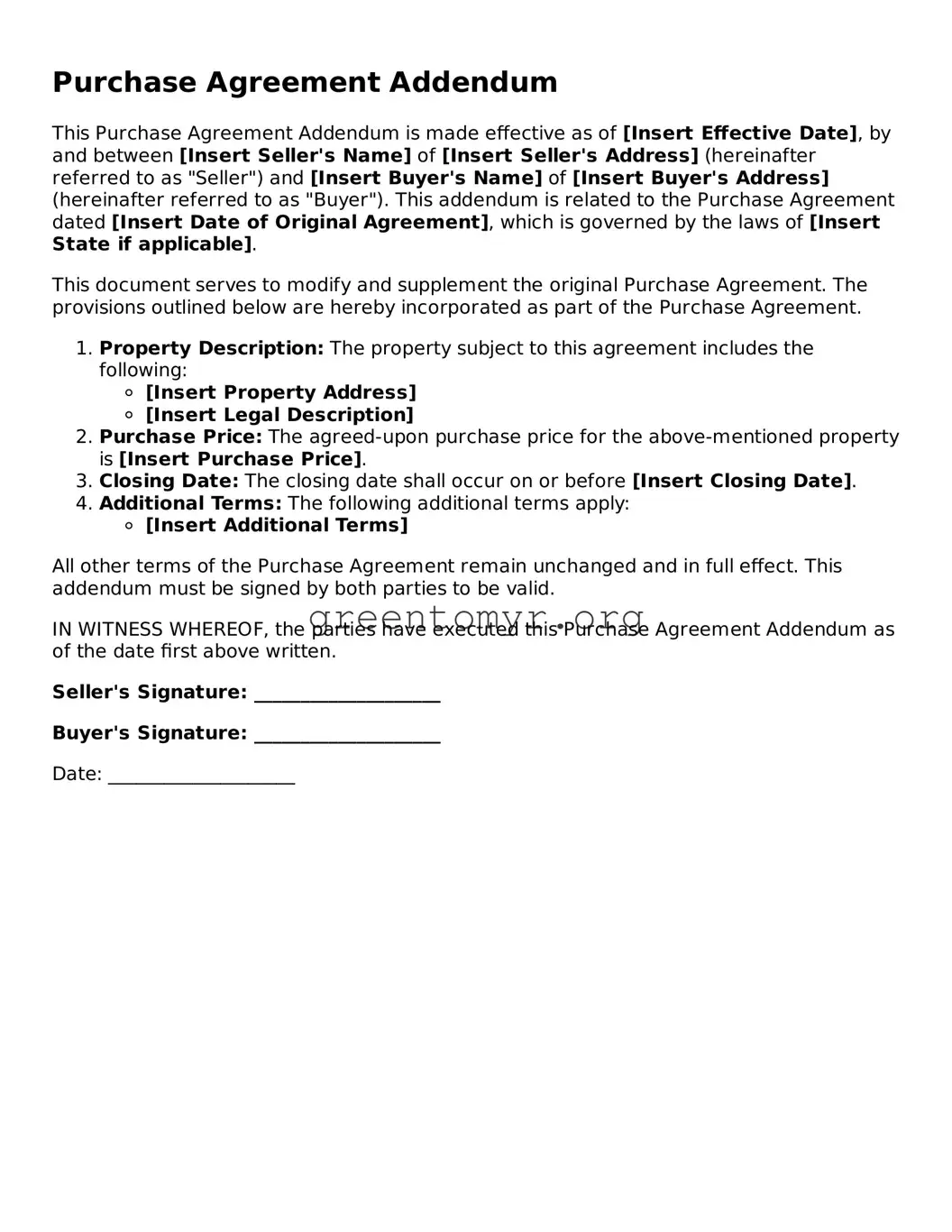The Purchase Agreement Addendum is a crucial document in real estate transactions. However, many people make mistakes when completing this form. One common error is neglecting to include all necessary parties. When any party involved in the transaction fails to sign, it can lead to complications and invalid agreements.
Another frequent mistake is omitting essential details about the property. It is important to specify the address, legal description, and any pertinent characteristics. If this information is vague or missing, it can create confusion later on and potentially derail the transaction.
Some individuals fail to properly date the document. Each party should sign and date the addendum to ensure that everyone is aware of when the agreement was executed. Without proper dating, disputes about timelines may arise, complicating the process further.
Many people also overlook the importance of clear terms regarding contingencies. If certain conditions must be met for the agreement to remain valid, these should be explicitly stated. Vague language can lead to misunderstandings and disagreements between the parties.
Using inconsistent terminology is another common pitfall. It is vital to use the same terms throughout the document to describe parties, conditions, and properties. Inconsistencies create ambiguity, which can complicate the enforcement of the agreement.
Often, individuals do not consult with legal professionals when completing the addendum. While it may seem straightforward, legal nuances exist that can significantly impact the agreement. Seeking guidance can help ensure that all clauses and stipulations are appropriately addressed.
Some individuals fail to review the entire Purchase Agreement before filling out the addendum. This oversight can result in discrepancies between the main agreement and the addendum, causing potential legal issues after the fact.
Finally, not retaining copies of the signed addendum can lead to significant issues. Each party should keep a copy for their records to confirm what agreements were made. If a dispute arises, having these documents readily available can facilitate resolution.
